
This annual symposium is dedicated to the late Erich Bloch, former director of the National Science Foundation who helped endow the Department of Materials Design and Innovation at UB. The symposium is part of the MDI Summer Institute, an extra-mural program of UB’s Department of Materials Design and Innovation that supports a broad range of outreach activities to promote research and education platforms in materials design. This year's conference theme is connectomics.
Connectomics – Seeking connections across diverse data and information
The concept of ‘connectomics’ is used in the field of neuroscience to address the challenges encountered in mapping the brain to study the connections within the brain, its communication network, and patterns that link to human behavior. The connectomics paradigm can in fact be expanded to many other disciplines. For instance, the current approaches to accelerated materials design focus on generating large amounts of data at discrete length and time scales. However, our ability to rapidly translate the knowledge obtained at the atomic level to the systems level is hindered by the difficulties in tracking the connections across time and length scales.
The connectomics concept can be adapted to create a new paradigm that seeks to discover the key connections between and across length scales, using both computational and experimental methods. Such an approach can meaningfully gather and connect different forms and modalities of data and information, thus, tracing the pathways from quantum level behavior to engineering systems performance. Further, by mapping the comprehensive connections across time and length scales, this connectomics approach will allow us to account for potential human and environmental impact in all phases of the materials’ life cycle, from synthesis through manufacturing, and end-of-life. This would take the field of materials informatics, as applied to materials design and discovery, to a new level. In this symposium, we explore the connectomics paradigm in a highly multidisciplinary perspective including the fields of materials science and engineering, medicine, economics and environmental sciences and policy.

Tuesday, June 7 | 110 Knox Hall | North Campus
Time | Topic | Speaker(s) |
|---|---|---|
| 8:00 a.m. | Breakfast and Registration | |
| 8:30-9:00 a.m. | Welcome and Introductions | Krishna Rajan, SUNY Distinguished Professor and Erich Bloch Chair, Department of Materials Design and Innovation - University at Buffalo Robin Schulze, Dean, College of Arts and Sciences - University at Buffalo |
| 9:00-9:30 a.m. | Materials Connectomics | Krishna Rajan, SUNY Distinguished Professor and Erich Bloch Chair, Department of Materials Design and Innovation - University at Buffalo |
| Session I-A | Session Chair: Edward Snell, Director, NSF STC BioXFEL; Senior Scientist, CEO of Hauptman-Woodward Medical Institute; Professor, Materials Design and Innovation - University at Buffalo | |
| 9:30-10:15 a.m. | Bridging the Gap: Communicating With Data in Multidisciplinary Design and Innovation | Carl Kesselman, William H. Keck Professor of Engineering; Professor, Epstein Department of Industrial and Systems Engineering; Fellow, Information Sciences Institute; USC Viterbi School of Engineering and Professor, Preventative Medicine at Keck School of Medicine; Ostrow School of Dentistry - University of Southern California |
| 10:15-11:00 a.m. | Connecting the Parts to the Whole: The New Science of Self-organization and Emergent Phenomena | Venkat Venkatasubramanian, Samuel Ruben-Peter G Viele Professor of Engineering, Center of Management of Systemic Risk, Dept. of Chemical Engineering - Columbia University |
| 11:00-11:20 a.m. | ----------Break---------- | |
| Session I-B | Session Chair: Edward Snell, Director, NSF STC BioXFEL; Senior Scientist, CEO of Hauptman-Woodward Medical Institute; Professor, Materials Design and Innovation - University at Buffalo | |
| 11:20-11:40 a.m. | Promises and Pitfalls of Autonomous Materials Research | Kristofer Reyes, Assistant Professor, Materials Design and Innovation - University at Buffalo |
| 11:40-12:00 p.m. | Two-Dimensional Post-Graphene Chemistry for Clean Energy Applications | Fei Yao, Assistant Professor, Materials Design and Innovation - University at Buffalo |
| 12:00-1:00 p.m. | ----------Lunch---------- | |
| Session II-A | Session Chair: Quanxi Jia, SUNY Distinguished Professor, Materials Design and Innovation - University at Buffalo | |
| 1:00-1:45 p.m. | Multi-Scale Spatial Biology: A New Horizon in 21st Century Medicine | John Tomaszewski, SUNY Distinguished Professor and Peter A. Nickerson, PhD Professor and Chair of Pathology and Anatomical Sciences, Jacobs School of Medicine and Biomedical Sciences - University at Buffalo |
| 1:45-2:30 p.m. | Energy Storage Materials Design with Emerging Classical and Quantum Computing Methods | Tammie Borders, Senior Business Development Manager – Quantinuum |
| 2:30-2:50 p.m. | ----------Break---------- | |
| Session II-B | Session Chair: Quanxi Jia, SUNY Distinguished Professor, Materials Design and Innovation - University at Buffalo | |
| 2:50-3:10 p.m. | Free-Standing Semiconductor Nanomembranes Technology For Wearable Wireless Devices | Jung-Hun Seo, Associate Professor, Materials Design and Innovation - University at Buffalo |
| 3:10-3:30 p.m. | Bridging Gaps with Nanomaterials | Erik Einarsson, Associate Professor, Materials Design and Innovation and Electrical Engineering - University at Buffalo |
| 3:30-4:30 p.m. | ARES™ Autonomous Research Systems Control of Carbon Nanotube Yield and Structure | Benji Maruyama, Autonomous Materials Lead-Materials and Manufacturing Directorate - Air Force Research Laboratory |
| 4:30-5:15 p.m. | Session II Student Jamboree | Presentations by graduate students from the Department of Materials Design and Innovation |
| 5:30-7:30 p.m. | Poster Session and Reception in Davis Hall |
Wednesday, June 8 | 110 Knox Hall | North Campus
Time | Topic | Speaker(s) |
|---|---|---|
| 8:30-9:15 a.m. | Welcome | Kemper Lewis, Dean, School of Engineering and Applied Sciences - University at Buffalo |
| Session III-A | Session Chair: E. Bruce Pitman, Professor, Materials Design and Innovation - University at Buffalo | |
| 9:15-9:45 a.m. | From Atoms to the Environment: Data and Materials Science, Hand in Hand | Olga Wodo, Associate Professor, Materials Design and Innovation - University at Buffalo |
| 9:45-10:15 a.m. | Designing Alternatives for Environmentally Hazardous Chemicals | Prathima Nalan, Assistant Professor, Materials Design and Innovation - University at Buffalo |
| 10:15-10:45 a.m. | ----------Break---------- | |
| Session III-B | Session Chair: E. Bruce Pitman, Professor, Materials Design and Innovation - University at Buffalo | |
| 10:45-11:30 a.m. | Connectomics and Data Justice | Sheila Davis, Executive Director - Silicon Valley Toxic Coalition |
| 11:30-12:15 p.m. | Advancing Safer, More Sustainable Chemicals and Materials: Lessons Learned | Joel Tickner, Director, Lowell Center for Sustainable Production, Professor, Department of Public Health - UMass, Lowell |
| 12:15-1:15 p.m. | ----------Lunch---------- | |
| Session IV-A | Session Chair: Krishna Rajan, SUNY Distinguished Professor, Materials Design and Innovation - University at Buffalo | |
| 1:15-2:00 p.m. | Multi-materials Design: Connecting Feasible Regions in Multi-Dimensional Alloy Spaces | Raymundo Arróyave, Professor, Department of Materials Science - Texas A&M |
| Session IV-B | Session Chair: Krishna Rajan, SUNY Distinguished Professor, Materials Design and Innovation - University at Buffalo | |
| 2:00-2:30 p.m. | Building Connections Between Atom Positions to Material Behavior: A Pathway to Material Design and Development | Baishakhi Mazumdar, Assistant Professor, Materials Design and Innovation - University at Buffalo |
| 2:30-3:00 p.m. | A ‘Connectomics’ Approach for Accelerated High Entropy Alloy Design | Scott Broderick, Assistant Professor, Materials Design and Innovation - University at Buffalo |
| 3:00-3:15 p.m. | Concluding Comments | Krishna Rajan, SUNY Distinguished Professor, Materials Design and Innovation - University at Buffalo |
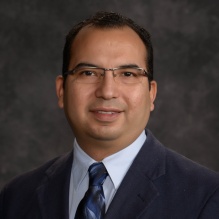
Raymundo Arróyave
Professor, Department of Materials Science - Texas A&M
Leading researcher in computational materials science. He uses computational materials science tools to investigate material properties at different scales of length and time. We use a variety of tools (such as: Ab Initio calculations, molecular dynamics, Monte Carlo, phase-field models, CALPHAD) to investigate the fundamental properties of complex materials.

Tammie Borders
Senior Business Development Manager – Quantinuum
An early advocate of Materials Informatics, Tammie uses AI/ML and decision science algorithms, hybrid computational architectures and scientific data management, energy systems, and materials discovery and design to quantum computing. A PhD in computational physical chemistry, University of North Texas, she was a national Diversity MBA, 100 under 50 leaders in 2019. She was technical advisor in the Defense Nuclear Nonproliferation Research & Development program at NNSA, U.S. Department of Energy (DOE) and led Data and Software Sciences at Idaho National Laboratory.
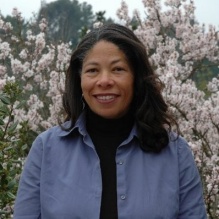
Sheila Davis
Executive Director - Silicon Valley Toxic Coalition
Sheila helped shape environmental policy in the high-tech industry. She is one of the co-founders of the Computer TakeBack Campaign and sits on its steering committee. In 1996 she researched and developed the first electronic recycling legislation to reach the California Governor’s desk and in 1999 spearheaded the first pilot programs in the country to collect and recycle electronic waste from the residential curbside. Before becoming SVTC’s executive director, she served as program director of SVTC’s Sustainable Technologies Program (formerly the Clean Computer Campaign). Sheila’s research, advocacy and policy development led to a successful ban on hazardous electronic waste from the California municipal landfills and the subsequent passage of the first electronic recycling legislation in the nation. Sheila holds a Bachelor’s Degree from the University of California and served as a journalist, state legislative aide and community development specialist before joining the staff of SVTC.

Carl Kesselman
William H. Keck Professor of Engineering; Professor, Epstein Department of Industrial and Systems Engineering; Fellow, Information Sciences Institute; USC Viterbi School of Engineering and Professor, Preventative Medicine at Keck School of Medicine; Ostrow School of Dentistry - University of Southern California
Carl is a USC Information Sciences Institute Fellow, where he directs the Informatics Systems Research Division and the Director of the Center of Excellence for Discovery Informatics in the Michelson Center for Convergent Biosciences, University of Southern California. He is considered to be the father of grid computing; application of advanced distributed computing and collaboration techniques to grand challenge problems in health informatics, biomedical science and policy. He serves on the National Academy review panel for the materials science and engineering program at NIST.

Benji Maruyama
Autonomous Research Lead, Materials and Manufacturing Directorate - Air Force Research Lab
A pioneer in the field of autonomous materials research, Benji Muryama developed the first autonomous research systems for materials, linking autonomous robotics, artificial intelligence, data science and experimental techniques, which ultimately aided his work in AFRL’s Materials and Manufacturing Directorate.
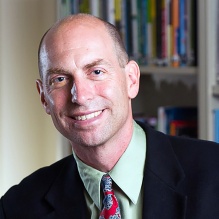
Joel Tickner
Director, Lowell Center for Sustainable Production, Professor, Department of Public Health - UMass, Lowell
Joel Tickner is a pioneer in making chemistry safer for people and the environment. He founded and is executive director of the Green Chemistry and Commerce Council, a network of more than 120 companies and other organizations, including major retailers and brands, dedicated to promoting safer products.

John Tomaszewski
SUNY Distinguished Professor and Peter A. Nickerson, PhD Professor and Chair of Pathology and Anatomical Sciences, Jacobs School of Medicine and Biomedical Sciences - University at Buffalo
John has spearheaded quantitative image analysis tools tailored to the needs of the digital pathology community. Helped create a new analytic paradigm fusing the data from the quantitative analysis of high-resolution images with multidimensional molecular data. This “fused diagnostics” approach helps support personalized predictive modeling of disease and its response to therapy. He has developed platforms which will support this new way of addressing complex multivariable testing.
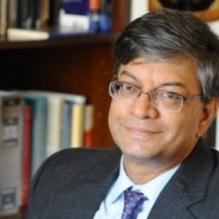
Venkat Venkatasubramanian
Samuel Ruben-Peter G Viele Professor of Chemical Engineering - Columbia University
Venkat works at the intersection of different disciplines. A leitmotif in his work is understanding emergent phenomena in self-organized and complex dynamical systems, particularly using artificial intelligence, statistical mechanics, game theory, and systems engineering concepts and techniques. His research contributions have been in the areas of process fault diagnosis and risk management, materials discovery analytics, pharmaceutical engineering, free-market dynamics, and income inequality.
It is widely accepted that data is the foundation of innovation and discovery. One makes hypnosis and collects data to either support or disprove that hypothesis. However, in the context of multidisciplinary collaborations, data plays a much more profound role in facilitating communication across disciplinary boundaries. Data become shared artifacts over which cross-boundary communication can take place. Realizing the potential of data to facilitate communication requires that we think about the data lifecycle more broadly, from the perspective of how it will be used in the context of the socio-technical ecosystem that is a vibrant and collaborative, design and innovation process. In my talk, I will examine how data can be used to facilitate connections in multidisciplinary teams and provide an example of how these techniques were used to create fundamental new results in neuroscience.
Scientific thinking in the last two centuries has been dominated by the reductionist paradigm, wherein one tries to understand macroscopic properties and behavior of matter in terms of the fundamental principles and mechanisms. Reductionism is a top-down framework, starting at the macro-level and then going deeper and deeper, seeking causal explanations at the micro-level, nano-level, and even deeper levels. In other words, we go from the whole to the parts. Physics and chemistry were spectacularly successful in pursuing this paradigm in the last century, producing quantum mechanics, the general theory of relativity, quantum field theory, the Standard Model, and string theory. Even biology pursued this paradigm with phenomenal success and showed how heredity could be explained by molecular structures and phenomena such as the double helix and the central dogma. Some 600+ Nobel Prizes have been awarded to the reductionist pursuit.
But can reductionism answer the following question? A single neuron is not self-aware, but when 100 billion of them are organized in a particular configuration, the whole system is spontaneously self-aware. How does this happen? How does one go from the neuron to the brain to the mind?
Reductionism cannot answer this question because there is nothing left to reduce. Addressing this challenge, in fact, requires the opposite approach, a bottom-up constructionist paradigm that goes from the parts to the whole. Many grand challenges in 21st-century science are such bottom-up emergent phenomena. Examples include predicting a phenotype from a genotype, predicting the effects of human behavior on the global climate, emergence of economic inequality, and emergence of consciousness and self-awareness, quantitatively and analytically. Furthermore, reductionism, by the very nature of its inquiry, typically does not concern itself with teleology or purposeful behavior. Modeling bottom-up phenomena, in contrast, requires addressing this important feature because teleology-like properties often emerge at the macroscopic levels, either explicitly or implicitly.
Therefore, we need a new paradigm, a bottom-up constructionist mathematical framework, to go from the parts to the whole. In this talk, I will outline a novel mathematical framework, which I call statistical teleodynamics, as the first step in that direction. I will illustrate this theory using examples from economics and biology. In economics, the theory provides a surprising answer to a 200-year-old open problem, "How much income inequality is fair?" In biology, it provides interesting insights into the dynamical behavior of bacteria, ants, and birds flocking.
Full autonomous materials research promises dramatically accelerated scientific discovery through the combination of automated experimental equipment and AI-powered decision-making and hypothesis generation. This talk provides examples of autonomous materials research platforms based on our work. I will highlight the benefits of autonomous research and address some common misconceptions about the field. In particular, I emphasize the differences between how research is conducted by autonomous platforms compared to how it is done classically by human scientists (even by those with a “data-driven” orientation) and offer suggestions for how to build the bridge between humans and AI researchers.
Due to the high dependence on fossil fuels and their impact on environmental issues, clean and renewable energy is highly desired to fulfill the ever-increasing demand of modern society. As a result, electrochemical energy strategies, including energy storage and electrocatalysis, have drawn tremendous attention. Inspired by the exceptional properties of graphene, two-dimensional (2D) post-graphene materials (PGMs) such as transition metal dichalcogenides (TMDs) and MXenes have undergone enormous research development lately. The 2D PGMs provide a highly competitive landscape in terms of electrochemical performance because of their rich material chemistry, ultrahigh surface-to-volume ratio, and versatile material engineering possibilities. Nevertheless, their practical application is hindered by intrinsically low electrical conductivity along with poor structural stability. In this talk, strategies for improving the electrochemical performance of 2D PGMs in the applications of lithium-ion battery (LIB) and electrocatalytic hydrogen generation will be introduced with an emphasis on the structure-property-performance relationship interrogation. In addition, machine-learning (ML) techniques assisted synthesis, parameter space exploration will also be discussed to speed up the development of 2D PGMs.
Complex energy systems face challenges in balancing design, deployment, and sustainment with rapidly changing operational environments, reduced budgets, and accelerated schedules. By 2050, global energy demand will grow nearly 50% and power systems must incorporate higher levels of supply and demand flexibility to incorporate growing energy loads from grid-connected variable energy generation that is are key to reducing carbon emissions. Accelerated development and commercialization of next-generation energy storage materials is critical to achieve these needs. What to make next, what to test next are two key questions in materials research. However, the traditional materials design approach is largely driven by subject expertise and post-processing of data that defines the next round of experiments or simulations. This approach takes upwards of 20 years from ideation to deployment and incorporates bias, potentially limiting the design space. While machine learning and classical computational simulation methods are making phenomenal strides, quantum computing based methods show promise to push accelerated battery design and deployment and to go beyond limits of current practice today. This presentation will provide evolving needs of energy storage systems, current state of the art and limitations of classical computational approaches, and identify potential future opportunities for quantum computing based methods.
Flexible electronics have been mainly addressing electronic applications operating at low or moderate speed. For these applications, form factors such as bendability and large area are of more importance than speed. On the other hand, there is a wider spectrum of electronics applications where higher speed and mechanical flexibility are simultaneously needed, such as high-speed and wireless communications, and remote sensing. Wirelessly connected devices enabled only by high operation speed/frequency are more convenient to use than wired devices and a high-frequency wireless system is also generally more compact than low-frequency ones, thus offer ideal device solutions for myriad bio- and wearable electronics.
In this talk, our recent research on synthesis, processing and material/device characteristics of free-standing and transferrable single crystal semiconductor nanomembranes (NMs) will be reviewed. In addition, various material, mechanical, and electrical properties of semiconductor nanomembranes (NMs) that are crucial for active material of fast high-speed electronics will be presented. Finally, several high-speed active devices and exemplary system applications will be presented and a future perspective on how these advanced single crystal semiconductor NMs can help realizing a true internet of thing (IoT) era that connects a human and a computer wirelessly will be discussed.
Over the past few decades, communication data rates have increased exponentially as a growing number of users crave more information and connectivity. This growth has been sustained by advances in optical fiber and wireless technologies, but the allocated spectrum is simply running out of room. To continue to meet demand will require us to move from the gigahertz to the terahertz frequency range, but that comes with an added challenge of crossing the so-called terahertz gap. In this talk, I will discuss our efforts to bridge that gap using graphene, as well as the interdisciplinary gaps that exist between collaborators in different fields.
The current materials research process is slow and expensive; taking decades from invention to commercialization. The Air Force Research Laboratory pioneered ARES™, the first autonomous research system for materials development. A rapidly growing number of researchers are now exploiting advances in artificial intelligence (AI), autonomy & robotics, along with modeling and simulation to create research robots capable of doing iterative experimentation orders of magnitude faster than today. We will discuss concepts and advances in autonomous experimentation in general, and associated hardware, software and autonomous methods.
For Carbon Nanotubes (CNTs), we show progress in autonomous and data science methods to understand and control the fundamental mechanisms that drive CNT synthesis via CVD. We will explore the importance of the oxidizing or reducing nature of the CVD environment on nucleation and growth.
In the future, we expect autonomous research to revolutionize the research process, and propose a “Moore’s Law for the Speed of Research,” where the rate of advancement increases exponentially, and the cost of research drops exponentially. We also consider a renaissance in “Citizen Science” where access to online research robots makes science widely available.
There are a number of challenges to the development, adoption and scale of safer, more sustainable chemicals and materials. These relate to the lack of good information on chemical toxicity and lifecycle impacts as well as the incumbency of existing materials that perform well and are highly integrated into complex value chains. While policy and market drivers for more sustainable chemicals and materials are growing, the supply of safe and sustainable chemicals and materials and adoption in the marketplace still lags. In this presentation, we present lessons learned through various initiatives (the Massachusetts Toxics Use Reduction Institute, Green Chemistry & Commerce Council and Association for the Advancement of Alternatives Assessment) regarding academic-industrial and supply chain collaboration in research, demonstration, and commercialization to accelerate the growth and adoption and safer, more sustainable chemicals and materials.
The purpose of the US Environmental Protection Agency (EPA) Environmental Justice Screening and Mapping Tool is to help federal agencies identify disadvantaged communities that are marginalized, underserved, and overburdened. The Erich Bloch Symposium presentation entitled “Connectomics and Data Justice” will explore how the EPA’s efforts to combine quantitative data from across diverse federal agencies runs the risk of re-enforcing racial and social bias embedded from original federal data sources.
A variety of data-driven environmental screening and decision making-tools are also being developed for business, academic research and advocacy purposes. In many cases, these artificial intelligence-assisted tools harvest data from diverse sources to perform a wide range of tasks such as materials discovery, pollution mapping, supply chain traceability and materials management. The algorithms created to power these decision-making tools invariably reflect the values and invisible biases of their human creators and which they select.
A closer looker at the US EPA Environmental Justice Screening and Mapping Tool will demonstrate how even the federal government’s best intention to combine publicly available federal health and environmental data in a way that is meant to allow consistency in identifying adversely impacted communities, can have unintended consequences due to data gaps and omissions, political controversies and historical prejudices.
The talk will bring different perspectives on how data science and materials science play an essential role in microstructure design at different length scales. Microstructure design is the decision-making process of determining material distribution to optimize performance. We will showcase examples of designing the mycelium network for soil remediation in Buffalo, controlling the microstructure in thin-film organic electronics, and finally understanding the oxygen vacancies in ceramic materials.
Several toxic chemicals have silently entered our environment, with or without our knowledge of their potential harm to humans and other living organisms. Environment sustainability necessitates the development of novel alternative chemicals that reduce or eliminate the use or generation of such hazardous substances. A holistic approach requires collecting and including data and information generated during the design of alternate chemicals, understanding their fate and transport, and the social awareness and acceptability of the alternate chemicals in the realm of existing policies. This talk attempts to implement this process for the remediation of toxicant lead (heavy metal) and fluorocarbons (PFAS) from the soil environment.
As we push the performance requirements of transformative technologies, oftentimes we find ourselves with performance objectives/constraints that are (almost) impossible to achieve with the available materials palette. As an example, when considering many important current and future energy technologies, ranging from gas turbine blades, to plasma-facing components in fusion nuclear reactors, the operating conditions are so extreme that there is no single material capable of fulfilling them all at once. In many of these cases, the performance requirements are highly localized. For example, oxidation resistance is only necessary in the regions of the component exposed to oxidizing atmospheres, while creep strength may be needed in the interior. Recently, technologies for multi-material synthesis/fabrication have emerged. In the context of metals and metal alloys, Directed Energy Deposition (DED) multi-material printers are becoming increasingly common. Multi-material 3D printing technologies are thus a potential vector to realize multi-material parts. Unfortunately, ‘stitching’ together multiple alloys so each fulfills its localized performance requirements is not trivial as naïve connections through the composition space are likely to result in the formation of highly deleterious phases. In this talk, I will present some ideas for the path forward in multi-material design (applied to alloy systems) that is based on finding feasible connections in multi-component alloy spaces. Specifically, we have used robotic path planning algorithms to find feasible, non-trivial trajectories in multi-component systems. Current progress and future challenges will be discussed and potentials for leveraging these tools to learn more about multi-dimensional alloy spaces will be presented.
Improving power conversion efficiency in a wide range of applications (including consumer appliances, all-electric and hybrid-electric vehicles), and extraction and conversion in cost-effective renewable energy sources can save energy, significantly reduce costs, and thus benefiting both the economy and environment. Key to the revolutionizing power electronics components relies on the material architecture that controls the crucial properties and performance. One of our ultimate goals of material design and development is to link the complex behavior that occurs at the materials constituents’ level and the desired properties, and ultimately generate know-how about what really happens at the scale of charge carriers and microstructures within the material systems. To achieve this information we employ an advanced microscopy tool, atom probe tomography that can obtain rich atomistic data on the structure and composition of these materials systems. The combination of advanced microscopy techniques and developments in complex machine learning algorithms have allowed us to create a new framework for generating structure-chemistry information. This information will be crucial to building connections with the material properties and guide the pathways for material design and development.
This presentation uses a graph theory approach to connect atomic, thermodynamic, environmental and material-scale data to develop a new index for the design of high entropy alloys (HEAs). By mapping the high dimensional nature of the systematics of elemental data embedded in the periodic table into the form of a network graph, one can uncover the influence of specific combinations of elements on engineering properties of HEAs. Through the use of this ‘connectomics’ framework, chemical design rules linking basic chemical design with mechanical properties (in particular, yield strength) are utilized to identify new chemistries, with the predictions being subsequently experimentally validated. By performing this analysis in an unsupervised learning manner, we are ensuring that the relationships are physically relevant and are not impacted by bias, thereby leading to a new robust manner to consider alloy chemistries. Additionally, we capture the thermodynamic and structural complexity of HEAs and identify the potential existence of new combinations of phases not previously identified by tracking the connections in the network, and thus introduce a new multi-scale approach for accelerated HEA design.
This year's Erich Bloch Symposium will be held in Knox Hall, University at Buffalo, North Campus.
Guests can park in Jarvis Lot, across the street from Davis Hall, off of White Road. Ticketing will be suspended during the Symposium.

Aerial view of Knox Hall on the University at Buffalo's North Campus.
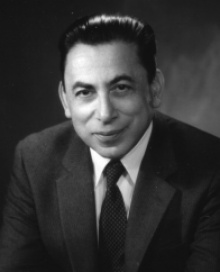
Erich Bloch (January 9, 1925 – November 25, 2016) was a German-born American electrical engineer and administrator. He was involved with developing IBM’s first transistorized supercomputer, 7030 Stretch, and mainframe computer, System/360. He served as director of the National Science Foundation from 1984 to 1990.
Bloch, the son of a Jewish businessman and housewife, lost his parents in the Holocaust, survived the war in a refugee camp in Switzerland and immigrated in 1948 to the United States. He studied electrical engineering at ETH Zurich and received his bachelor of science in electrical engineering from the University of Buffalo.
Bloch joined IBM after graduating in 1952. He was engineering manager of IBM’s STRETCH supercomputer system and director of several research sites during his career. In June 1984, Ronald Reagan nominated Bloch to succeed Edward Alan Knapp as director of the National Science Foundation. The same year, he was elected a foreign member of the Royal Swedish Academy of Engineering Sciences. In 1985, Bloch was awarded one of the first National Medals of Technology and Innovation along with Bob O. Evans and Fred Brooks for their work on the IBM System/360.
After stepping down as director of the National Science Foundation, Bloch joined the Council on Competitiveness as its first distinguished fellow. The IEEE Computer Society awarded him the Computer Pioneer Award in 1993 for high speed computing. In 2002, the National Science Board honored Bloch with the Vannevar Bush Award. He was made a Fellow of the Computer History Museum in 2004 “for engineering management of the IBM Stretch supercomputer, and of the Solid Logic Technology used in the IBM System/360, which revolutionized the computer industry.”
In 2014, Bloch donated $1.5 million to the University at Buffalo to establish the Erich Bloch Endowed Chair for the new Department of Materials Design and Innovation.